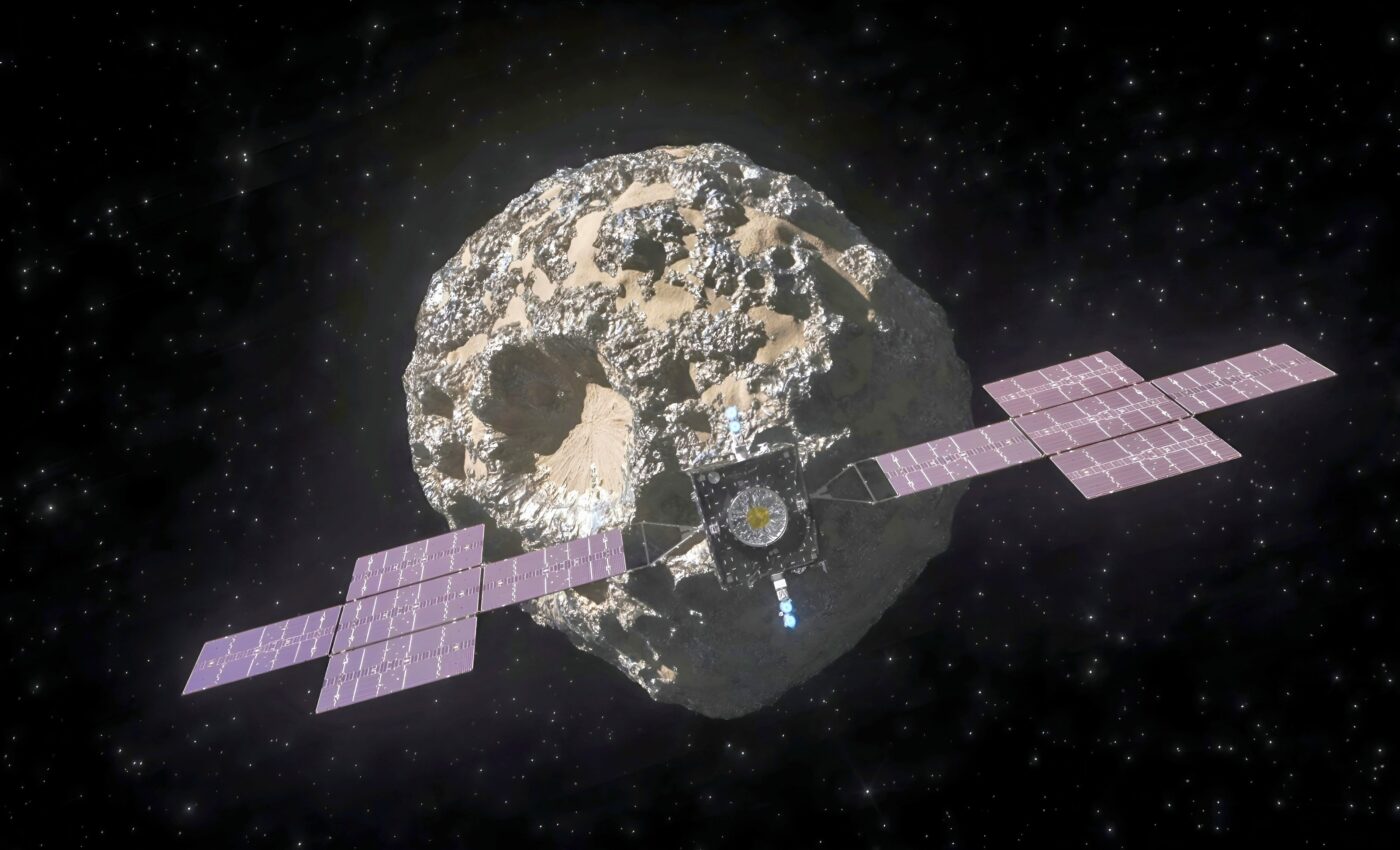
Psyche mission uses lasers for deep space communication with Earth
NASA’s ambitious Psyche mission, launched on October 13, 2023, is set to explore what is believed to be the exposed metallic core of a primordial planet. This mission is not just about planetary exploration but also serves as a platform for a groundbreaking technological experiment: NASA’s Deep Space Optical Communication (DSOC) demonstration. This demonstration aims to test laser-based communication for transmitting and receiving data from spacecraft far beyond the current capabilities of radio waves.
New possibilities for space communication
The challenge of using a narrow laser beam to communicate with a spacecraft 300 million km away is immense, involving both interplanetary and quantum mechanical complexities. The success of DSOC could revolutionize how we communicate in deep space, opening up new possibilities for data transmission in future space missions.
The European Space Agency (ESA) is set to join the DSOC demonstration in 2025, focusing on developing the necessary advanced laser technology and ground infrastructure in Europe. “Fiber optic technology on Earth has enabled incredible data transfer speeds for applications like the internet. However, data transfer with spacecraft at interplanetary distances is still limited to the use of radio waves,” explained Clemens Heese, the Head of the Optical Technologies section at ESA’s European Space Operations Center.
Optical communication
Heese points out the limitations of current technology and the need for innovation: “We have already shown that optical communication can offer much higher data rates for Earth observation and telecommunications satellites in low-Earth orbits. But to use it at deep space distances, we need high-power, high-accuracy lasers, and super-sensitive single-photon detectors that simply do not yet exist with the required performance.”
Optical communication’s advantage lies in its ability to use light pulses with a higher frequency than radio waves, allowing for the transmission of more data within the same time frame. This technology could enable future deep space missions to carry more sophisticated instruments and send back substantially more data to Earth than currently possible.
NASA’s DSOC is a pioneering step towards building confidence in optical communication for deep space exploration. ESA’s participation in this project aims to enhance European expertise in this crucial technology sector and strengthen the industrial capacity in single-photon quantum optical communication.
Strong international partnership
The collaboration between ESA and NASA symbolizes a strong international partnership in space exploration, drawing parallels to the compatibility of European mobile phones with American cellular networks. This cooperation is integral to the development of new satellite communication methods.
The ground infrastructure for DSOC, which must be situated at high altitudes to minimize atmospheric and cloud interference, is a critical component of this project. ESA and NASA are developing their respective infrastructures, with ESA’s team considering the Aristarchos telescope at the Helmos Observatory in Greece for receiving laser pulses from DSOC.
The development process includes setting up a high-power laser transmitter at the nearby Kryoneri Observatory and preparing a single-photon-sensitive detector/receiver at the Helmos Observatory. These observatories, operated by the Institute of Astronomy and Astrophysics, Space Applications and Remote Sensing (IAASARS) of the National Observatory of Athens, play a pivotal role in this longest optical link ever to be performed in Europe.
Project challenges
Sinda Mejri, the lead optical engineer of the ESA’s Ground Laser Receiver system, describes the challenges and intricacies of the project. “The receiver’s detector must be highly sensitive to detect individual quantum particles of light – photons – from DSOC, sent across hundreds of millions of kilometers. To detect the individual photons, the detector needs to be superconducting, meaning it can conduct electricity without any resistance. To achieve this, the receiver’s detector will be cooled to -272.15 degrees Celsius (1 Kelvin). Absorbing a photon disrupts the detector’s superconducting state, creating a measurable electrical pulse.”
The receiver’s design involves integrating 36 pixels to work in unison, which presents substantial challenges in quantum mechanics and electronic circuitry. Additionally, maintaining cryogenic cooling while allowing the telescope to track the spacecraft across the sky adds to the complexity of the project.
The development of ESA’s ground receiver, set to be tested at NASA’s Jet Propulsion Laboratory, represents a significant stride in this venture.
“The laser has to be so powerful that it would actually break down the protective coating of its own optical components and mirrors and melt conventional fiber optics if not designed with the necessary precautions. And we are combining up to seven separate beams that have to work together seamlessly,” said Andrea Di Mira, ESA Ground Laser Transmitter optical lead engineer.
Broader implications
This ambitious project, funded through ESA’s General Support Technology Program and Technology Development Element, is a testament to European industry’s capability to meet technological challenges. Mejri notes the broader implications: “The work they carry out here could also give them an edge in the development of important technologies for applications such as Quantum key distribution, used for secure communications, and quantum imaging.”
Deep-space optical communication, considered the most challenging form of optical communication, promises to significantly benefit ESA’s missions in fields like quantum optical communication.
The Psyche mission, alongside the DSOC technology demonstration, is poised to enhance our understanding of the universe and revolutionize our ability to transmit vast amounts of scientific data back to Earth. This mission, exploring the metal-rich asteroid Psyche, provides a unique opportunity to study the history and formation of Earth-like planets.
The DSOC demonstration, scheduled for 2025, could pave the way for a new era of Solar System exploration and the development of deep space optical communication stations on Earth. This journey to an ancient metal world represents not only a milestone in space exploration but also a leap forward in communication technology, heralding a new chapter in humanity’s quest to explore the cosmos.
Like what you read? Subscribe to our newsletter for engaging articles, exclusive content, and the latest updates.
—-
Check us out on EarthSnap, a free app brought to you by Eric Ralls and Earth.com.













